Three years ago I built up a Salsa Fargo as my Bikepacking bike for all purposes. Since then I have ridden 18,000 km with it and have also competed in two ultra races with the Atlas and Silk Road Mountain Race with this bike.
After the first build I have it gradually optimized and adapted to my needs. And of course always tried new things or replaced when worn. So I have changed the Mullet setup with MTB gears in the back and road shifters in front, changed my brakes from mechanical to semi-hydraulic and also changed my wheels.
In the process, of course, I have also been able to gain a lot of experience. And that’s what I’m often about: Instead of just speculating or pre-judging, I prefer to try things out myself and form an opinion through my own experience.
What has always remained, however, are the Salsa Fargo Titanium frame with the carbon fork. Both are already quite taken and look accordingly. But if adventures leave no traces, then they were probably nothing.
Now I have again given my bike an update – and quite “radically”: I have changed from mechanical to electronic gears, from mechanical brakes to hydraulic, from aluminum rims to carbon.
To say it right up front: Of course, you don’t necessarily need all that. For my needs and plans, however, it is suitable and that’s what it’s all about in the end. So take it as an inspiration and if you have any questions, feel free to ask!
From 11 to 12: Drivetrain with SRAM AXS
This is where I made the biggest change: from 11-speed to 12-speed shifting and from mechanical to electronic.
Electronic shifting on bikes is not new and has now proven itself under the toughest conditions. The best known electronic gears are the Di2 from Shimano and the eTap AXS from SRAM. I’ve been a fan of SRAM shifters for many years and I like the fact that the Americans have developed a wireless electronic shifting, unlike Shimano. And I must say: from the switching precision and simplicity in the assembly and adjustment I am very excited. A battery charge is enough for about 1,000km and in case of need helps a spare battery, which incidentally weighs only 25g.

In front I shift with a SRAM Rival AXS, which controls a SRAM GX Egale AXS MTB rear derailleur in the back. So I can now easily combine a road with a MTB derailleur without any conversions or additions and have the gear ratio I want of rear 10-52 and front 32. So I have enough capacity with luggage in the terrain and mountains and sufficient forward propulsion on the flat. And I save myself all the cables.
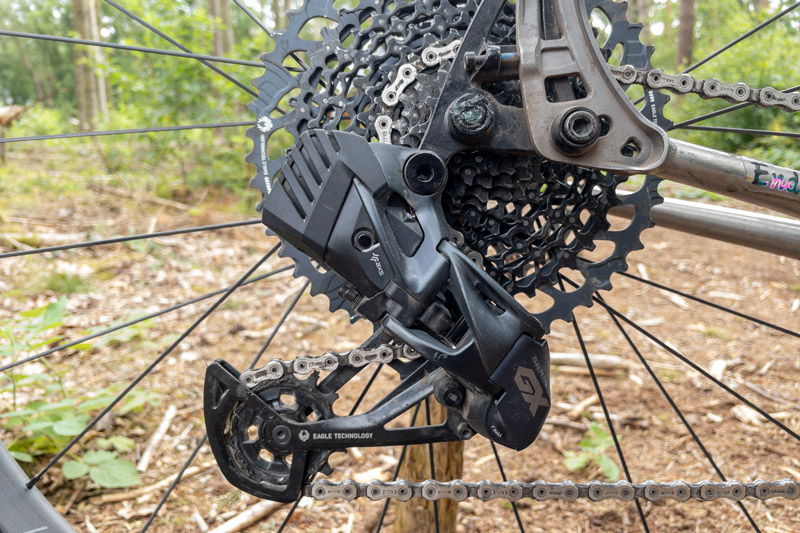
The oval 32er chainring is mounted as Direct to a Hope Evo crank (Boost). The bottom bracket is a 30mm Race Face BSA Cinch. Eventually I’m going to add a 34er or 36er chainring for everyday use.
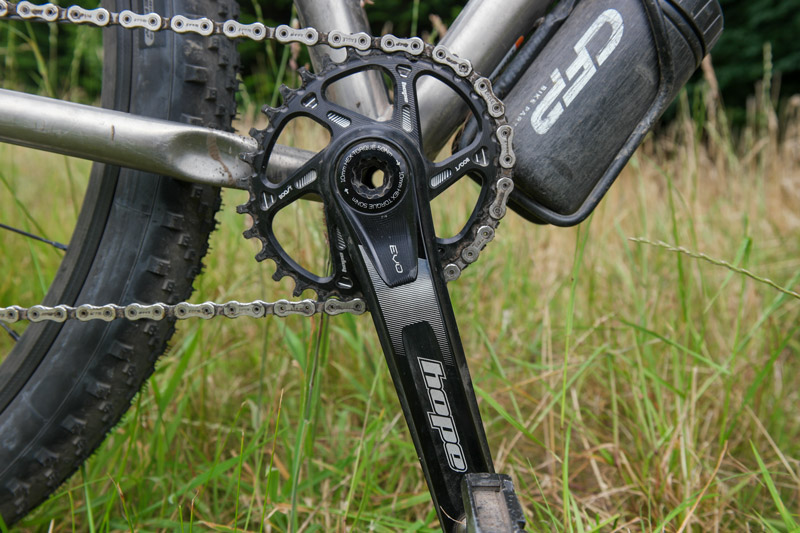
I would also have continued 11x, but the AXS is only available in the 12x variant. On the 11-speed circuit I rode a Garbaruk 10-50 cassette with the following gearing: 10-12-14-16-19-22-26-30-36-42-50.
With the Egal GX I also chose the SRAM XG-1275 cassette with 10-52 and the following gearing: 10-12-14-16-18-21-24-28-32-36-42-52.
In addition to the difference in the ratio range of 500% (Garbaruk) to 520% (Eagle GX), the SRAM cassette also has a slightly finer gearing in the middle gears. But it is slightly heavier than the Garbaruk, even in the Garbaruk 12-speed 10-52 version.
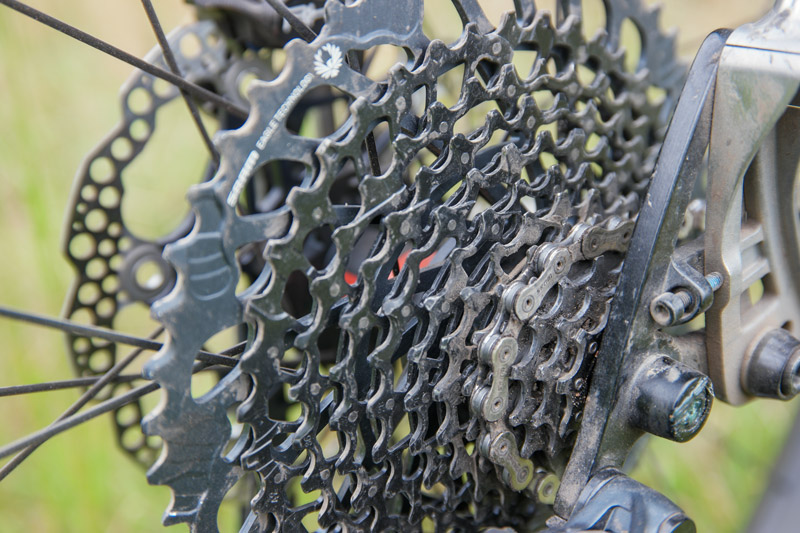
However, the SRAM cassette in conjunction with the SRAM XX1/X01 Eagle chain 12-speed PC 1290 should have a high durability. I’ll try that now and am curious how long this combination lasts. The Garbaruk with normal SRAM chain before has held around the 6,500km – so I expect at least 7,000km. So far I’ve ridden 2,000km with this circuit / cassette / chain.
From aluminum to carbon: Wheels from Lightwolf with Lilienthal
On the test bikes that I have ridden in recent months, there were sometimes wheels with carbon rims. From their stability, directional stability, power transmission and speed I was very impressed.
But here too: Of course, you do not necessarily need carbon wheels now, but I wanted to try it out. My but quite high demands on resistance and resilience needed then but a specialist for wheel construction: Lightwolf. Lightwolf is a now quite well-known and renowned wheel and bicycle manufacturing in Dresden and with Felix, name giver and “boss”, I have then discussed the details.

The result: I remain with the proven combination of SON 28 hub dynamo front and rear DT-Swiss 240 EXP with XD freewheel (both Boost). Therewith I made it through Kyrgyzstan and it has now 11,000 km on the hump. But they still run and the old wheels with DT-Swiss XM 491 rims remain as a replacement of course.
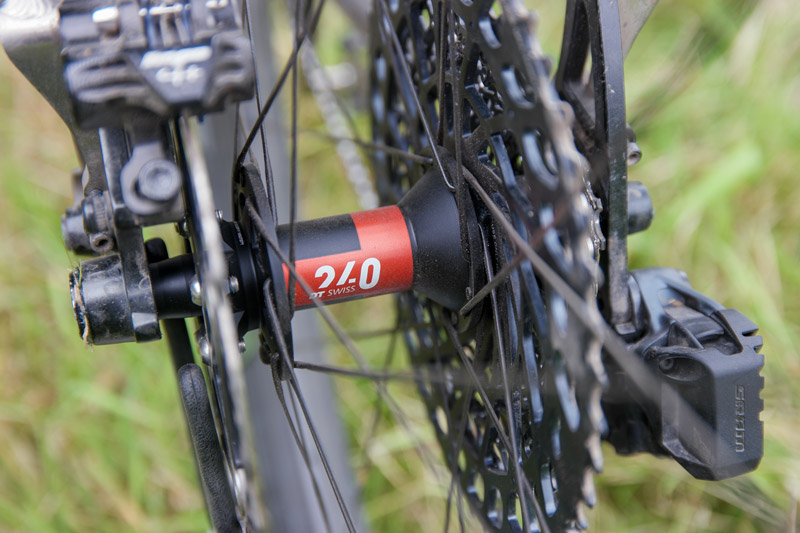
And now carbon: After extensive preliminary research I had Beast, Newmen, Duke and Lilienthal in the closer selection. Beast rims (also from Dresden) were but then too expensive for me. In conversation with Felix from Lightwolf we have then quite quickly made out the Lilienthal XC as the right rim for me: 28 holes with a system weight release of 130kg and especially with many positive experiences on the part of Lightwolf. Lilienthal is a company from Braunschweig, whose founders come from aerospace research.
The manufacturing technology developed by the founders at the German Aerospace Center is not only cost-efficient and resource-saving. It can also be easily adapted to the production of high-quality carbon bicycle rims.

The Lilienthal XC rim I selected is a 29 or 27.5 inch cross country rim. It has an inner width of 30mm, is Hookless, Tubeless ready, 28 or 32 spoke holes and weighs 400g (29 inch). However, the weight was not the main focus for me, but I have concentrated more on the performance and stability to be expected.
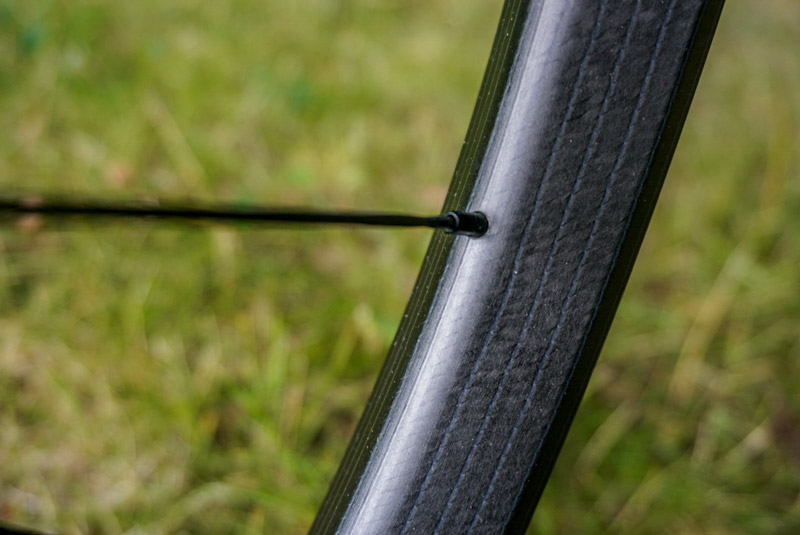
The spoke holes are drilled into the rim only after it is determined which hubs will be installed. Thus, each wheelset with Lilienthal by Lightwolf is also always unique. My wheelset has built Maike, which I would like to say thank you again at this point!
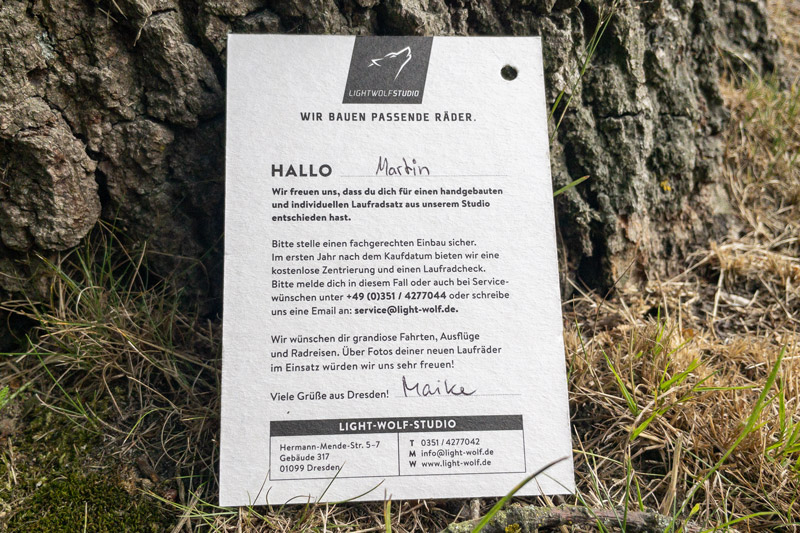
Also with the tires I go new ways and stay here also in Germany: After a recommendation of Jochen Böhringer I try now the MTB Speed tires of Wolfpack.
Wolfpack is still a kind of insider tip for high-quality and very performant tires, for mountain bikes, but especially for road bikes. Behind Wolfpack is Wolfgang Arenz, who may already be known to some of you.
Wolfgang Arenz is considered one of the best compounders in the bicycle industry since 2005. His developments are undisputed as respective performance benchmarks among bicycle tires.
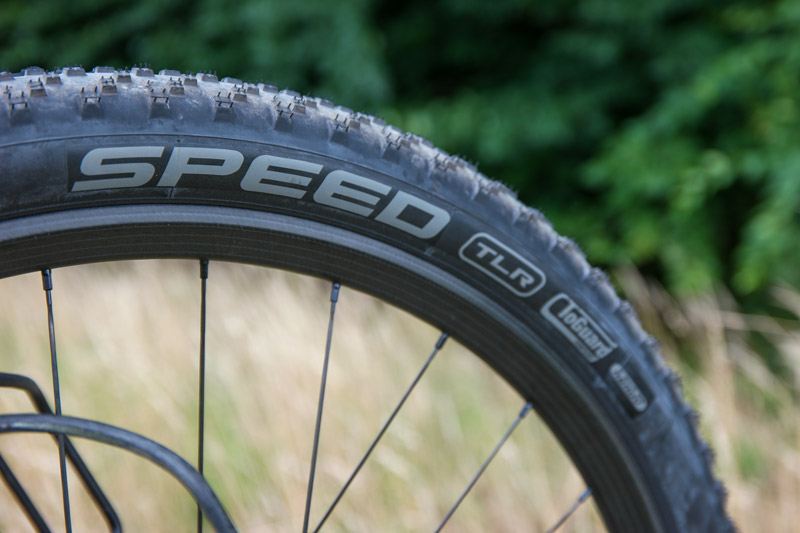
Wolfgang has been in tire development since 2005 and since 2018 he has been pouring all his experience into his own tires. Professional teams like Astana and Michelton-Scott rely on Wolfpack tires. This is also due to his profound expertise in tire development:
For more than 30 years, Wolfgang Arenz first developed car and later bicycle tires for Continental. He then revitalized the tire segment at Specialized for three years. His latest coup: Schwalbe’s current Addix rubber compounds.
The Speed TLR 2.25 x 29″ I selected has already carried Jochen Böhringer to victory in the Italy Divide this year. In addition, he is extensively praised in the reviews and recommended in many forums. It comes in 2.25 x 29″ (56×622) – 590g, 2.40 x 27.5″ (60×584) – 590g and 2.40 x 29″ (60×622) – 640g.

Mounting the tires on the Lilienthal XC rims was as easy as I’ve rarely experienced before. Without tire levers I was able to mount the Speed and then get tight with a normal floor pump. No compressor, no choking on the rim, simply plug & play. And they are tight. No air loss after the first inflate and fill with sealing milk.
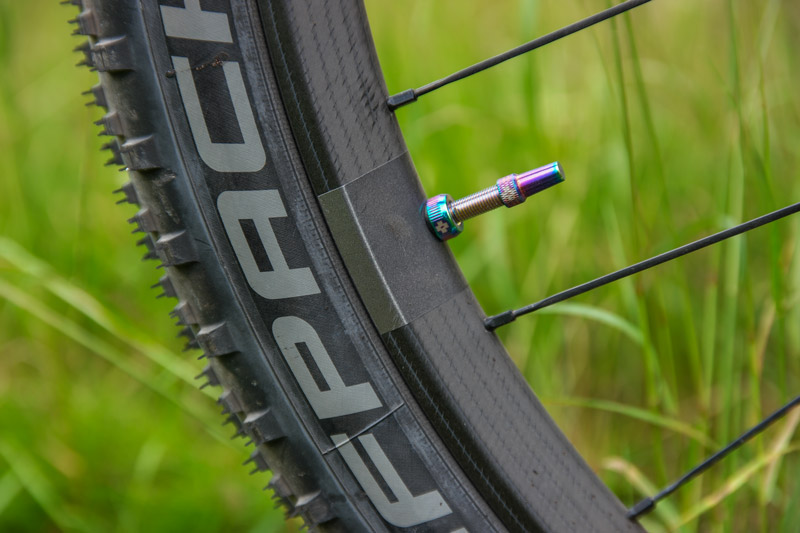
After 500km with the new wheels and tires, I must say that I am very impressed with the combination of Lilienthal and Wolfpack. The power transmission is noticeable, as well as the propulsion and the high stability of the rims. And also the tires show an extreme grip in curves in dry soil and light moisture, offer a high running safety and better propulsion than the Mezcal or the Ikon. As for stability and durability, I’ll have to see that over time, of course. So far, they have no damage and that is already very meaningful in my riding style.
And for those of you interested in weight: my new wheels are 800g lighter than the old ones.
In detail:
– Weight rear wheel OLD with cassette, disc and sealing milk: 2,500g
– Weight rear wheel NEW with cassette, disc and sealing milk: 2,050g
– Difference: 450g
– Weight front wheel OLD with disc and sealing milk: 2.200g
– Weight front wheel NEW with disc and sealing milk: 1.850g
– Difference: 350g
From 2 to 4: Hydraulic brakes
After the Atlas Mountain Race, I really wanted more braking power with less effort and have put on the TRP HYRD semi-hydraulic brakes, which in my view are very good. These have done at the Silk Road Mountain Race great job, however, increased with me the need for more braking power and the need for hydraulic brakes. But not just normal hydraulic MTB brakes, but powerful 4-piston brakes that allow no compromise when speeding down the mountain with luggage on boulder paths.
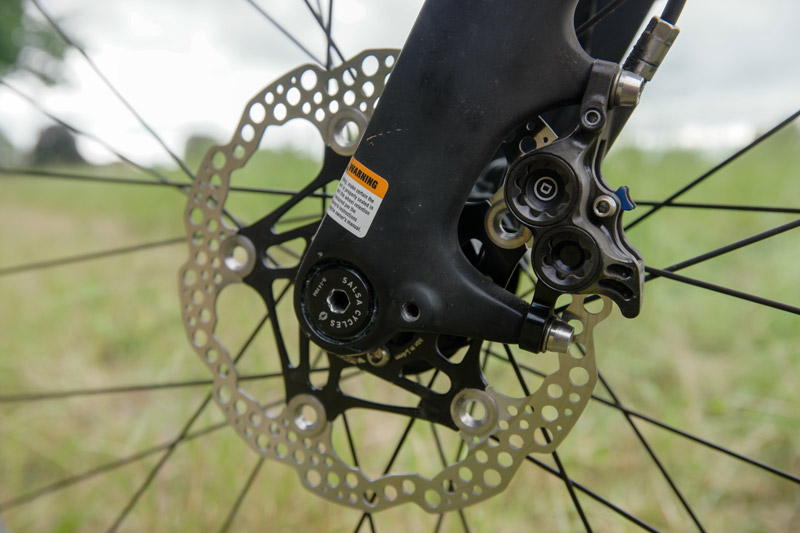
Philipp Markgraf from Pedalskillcancer then inspired me, because he rode in Kyrgyzstan with the Hope RX4+ 4-piston brakes. These brakes are available for Shimano (mineral oil) and SRAM (DOT).
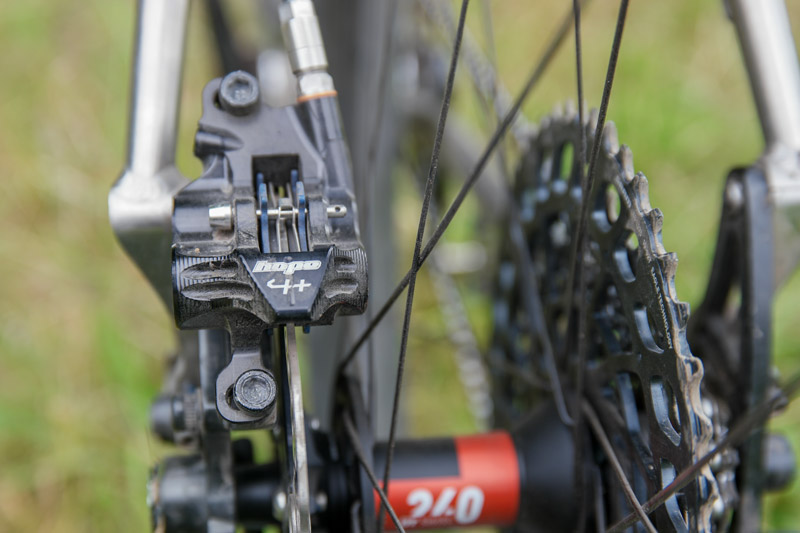
I bought the Hope RX4+ for Postmount and SRAM and then combined it with the SRAM Rival. These came already filled with SRAM Rival brakes. I cut these off, attached the Hope inserts and bolted on the RX4+ brake body. I then installed and bled the brakes.
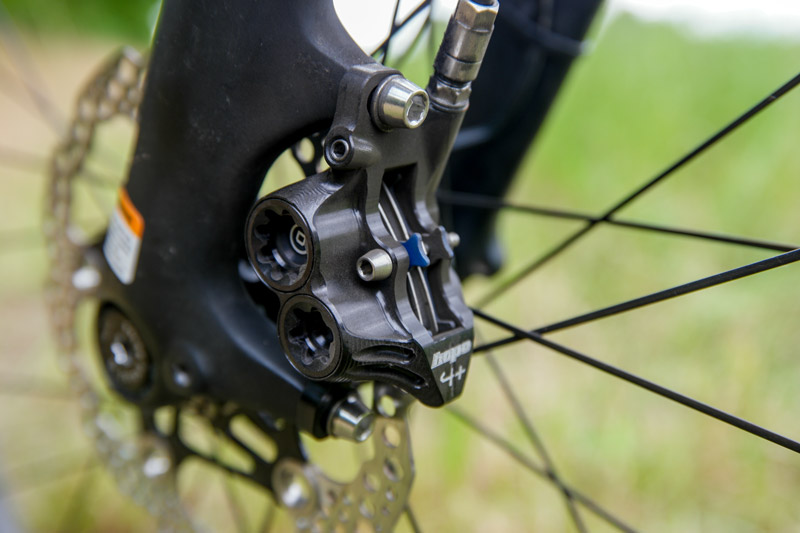
This was all new to me, but thanks to the good videos from SRAM and Hope has worked out great. And the braking performance is sensational. Very good dosage, very little effort and much more safety.
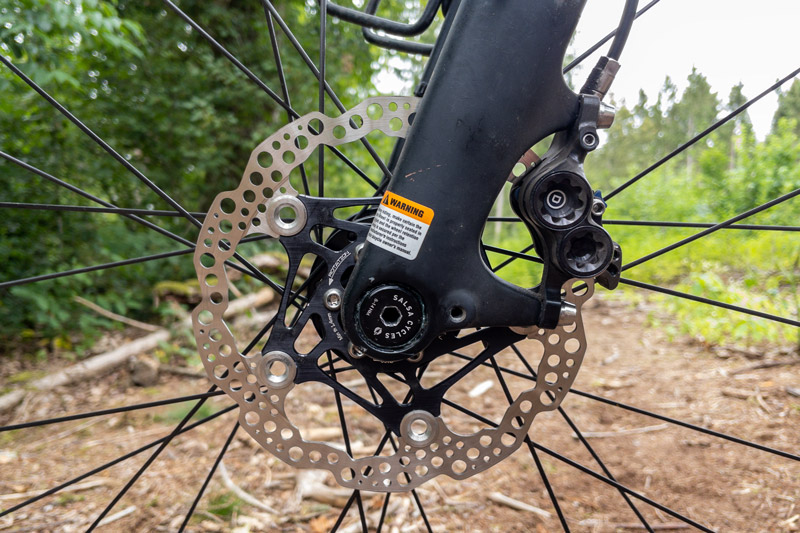
As brake discs, by the way, Hope are also used, which I appreciate very much because of their braking performance in dry and wet conditions. They are the best discs I have ridden so far.
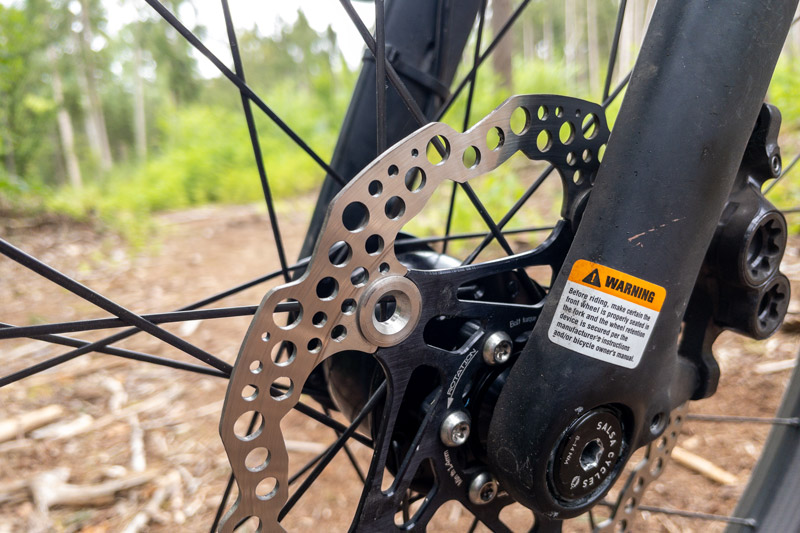
By the way: almost all parts on the Fargo are selected so that they can be at any time to another frame with Boost. Maybe times to a Salsa Cutthroat, maybe also to a new Fargo, if an update comes here. If you believe the rumors, then we expect in this update an adapted geometry and Flatmount brakes, to the alignment as a drop bar MTB better technically correspond to be able. This means: only the Hope brake bodies would then have to be changed. The rest can simply migrate to a new bike with Boost.
Light and power: Klite Powerhouse
Still with me is my lighting. In front I ride the Klite Bikepacker ULTRA V2 lamp with 1,300 lumens and an illumination of 180 degrees. This lamp is ideal to bring enough light on the trails and tracks, so that even faster riding is possible.
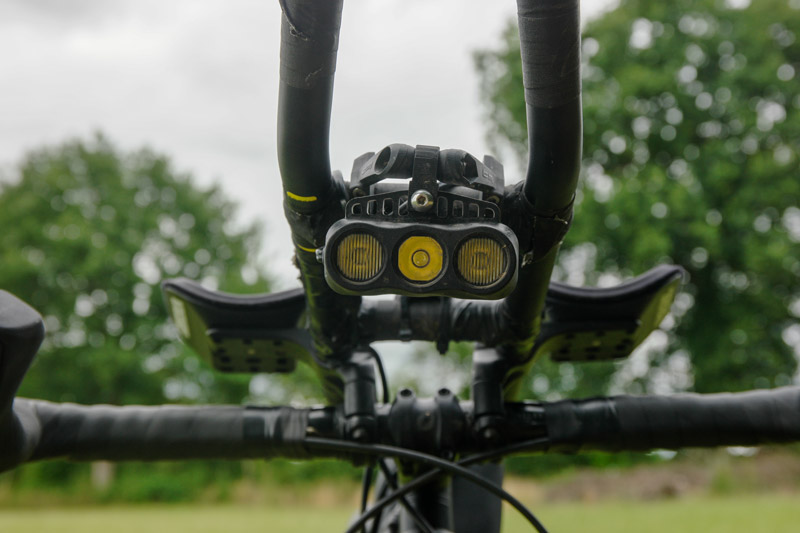
In addition, it has a stand light, which still illuminates sufficiently even when setting up camp. And best of all, the Klite produces sufficient light even at low speeds. This was especially good in Kyrgyzstan, where it was not always fast.
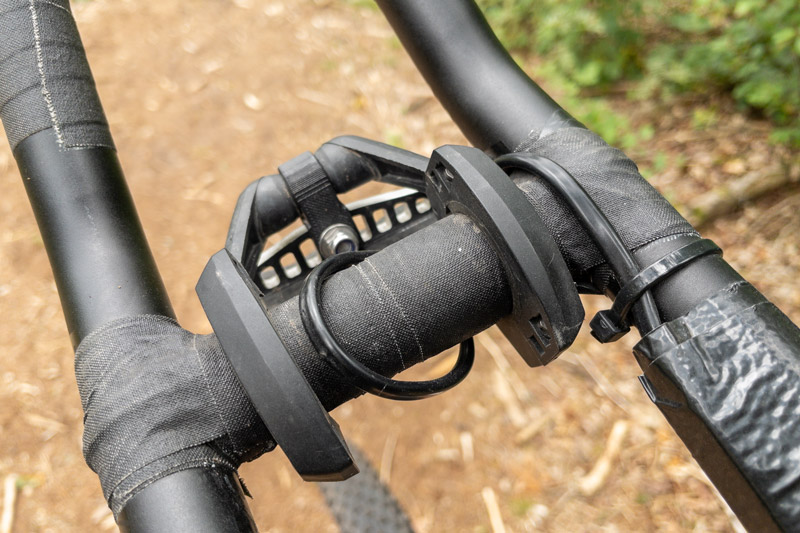
Before you ask: On the Aerobar the lamp is mounted with this holder. The crossbar is made of electric tube from the hardware store, fixed with cable ties and Gaffa tape.

The Bikepacker Ultra V2 I bought in a bundle with the Klite USB dual charger. This is controlled by an extra switch (Klite Bar Switch), respectively through this the light is turned on or off. The USB charger is so efficient that I could charge even in the Kyrgyz mountains while riding my Wahoo and at the same time my iPhone, or hold the level of charge. Charging also works when the lights are on, which then of course works in dim mode.
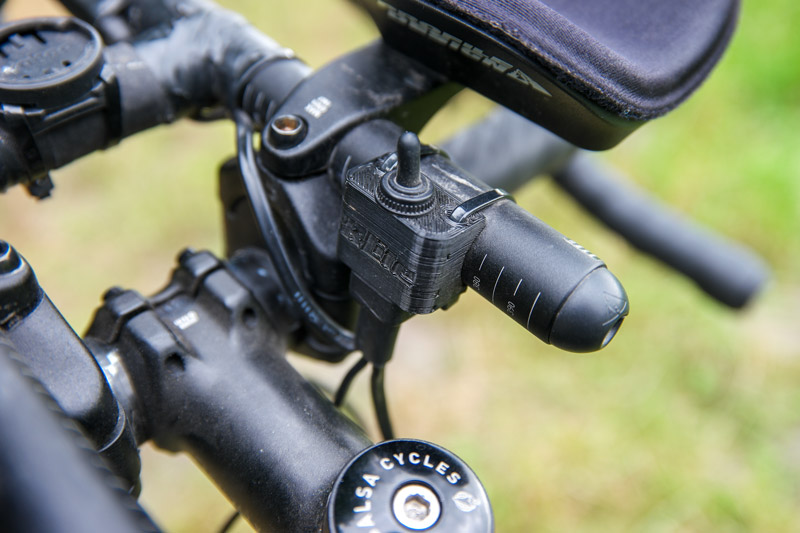
In the back, I then also got the Klite Qube tail light. It is connected to the USB charger and flashes in a certain rhythm.
At this point I would like to point out that the Klite lights are not StVo-compliant in Germany and are not sold in this country. The rear light flashes, which is currently not allowed. But I accept a penalty in the case, because the safety and being seen is more important to me.
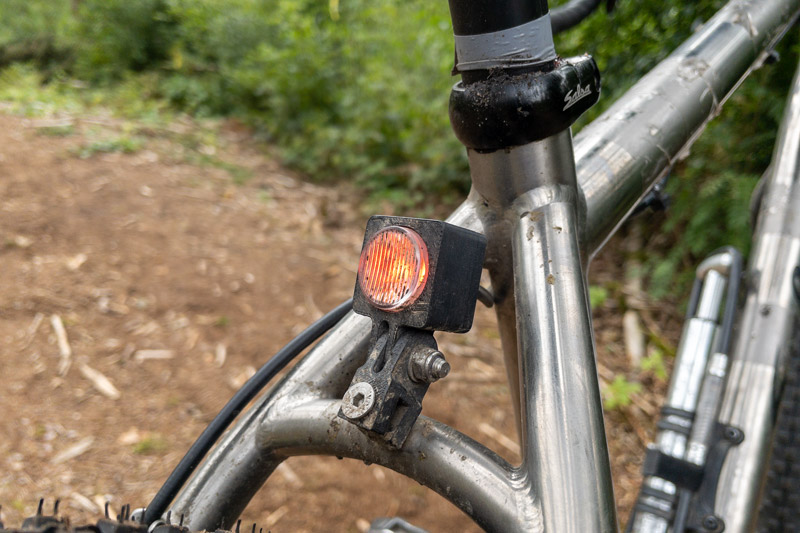
The front light is not allowed due to the lack of dimming. It shines very bright and very wide and can dazzle oncoming road users. I ride 90% off-road and need the appropriate illumination here when I ride in the dark. In road traffic I dim the lamp and then align it differently. And still have a normal battery lamp with me. But so far I have had no problems with it and ride considerately.
Of course, I always look for suitable alternatives. Such as the new Supernova M99 DY Pro. However, this is not compatible with USB chargers. Since Klite as well as Sinewave are more developed from the bikepacker / bikepacking race understanding and think loader and switch – with very high luminosity – the same.
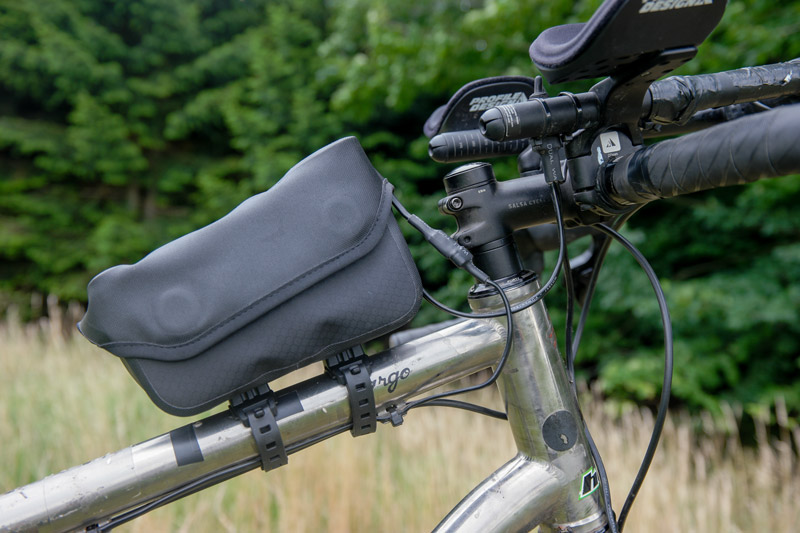
By the way, the USB charger rides in the cockpit bag. This is currently the new Ortlieb Fuel Pack top tube bag. To this I will report separately.
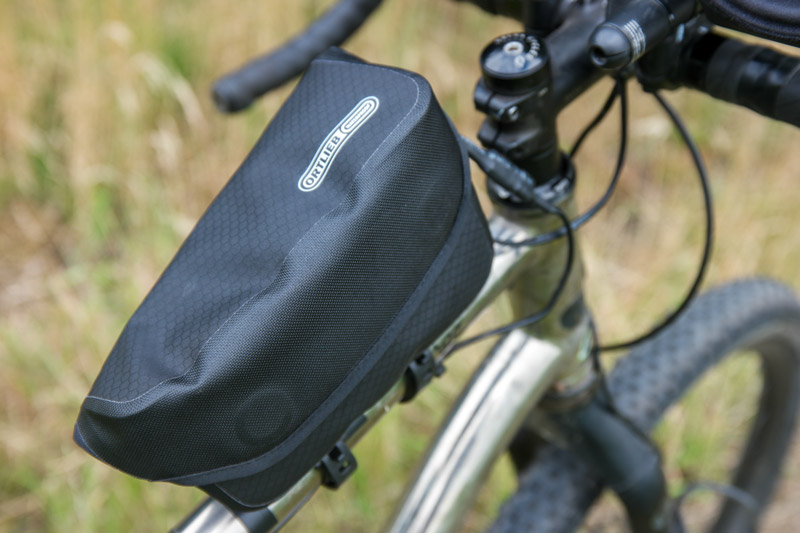
And what else?
The saddle is the Ergon SR Allroad Core Comp Men and the suspension seatpost is the CF Allroad Pro Carbon. The seatpost is not necessarily approved for trips with luggage according to Ergon (maximum load 100kg and often panniers could not be attached to carbon posts). Therefore, I alternatively used the Thomson Elite seatpost when luggage is involved.
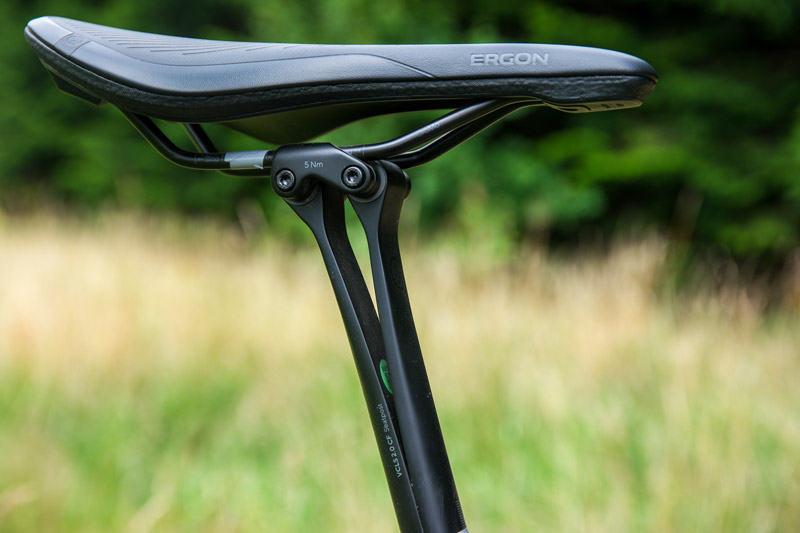
When it comes to pedals, I have had very good experiences with the XT Hybrid Pedals PD-T8000. This has accompanied me in Kyrgyzstan and has a click and a platform side. This gives me more control and safety in more challenging terrain while providing optimal power transmission through the SPD side.
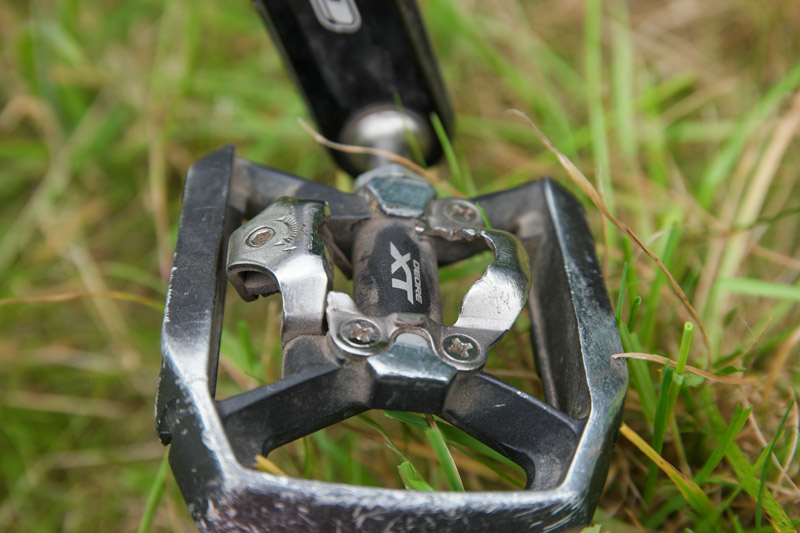
In addition, I got myself the Shimano PD-M520. For test bikes and as an everyday alternative for my Fargo. They are also slightly lighter than the XT pedals.
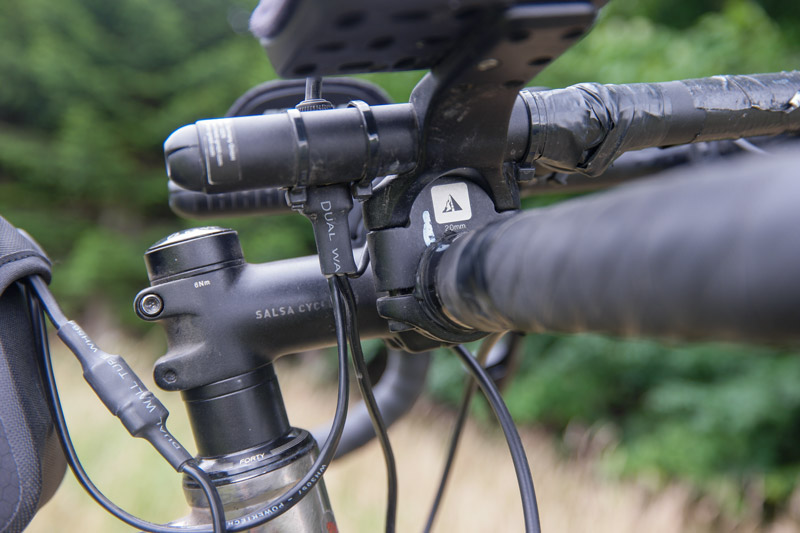
For handlebars and stem, everything has remained the same. Here I ride the Salsa Guide stem and the Salsa Cowchipper handlebar in 48er width. On it, the Profile Design Sonic Ergo 35a Aerobar are mounted, which I have been riding for years and very much appreciate.
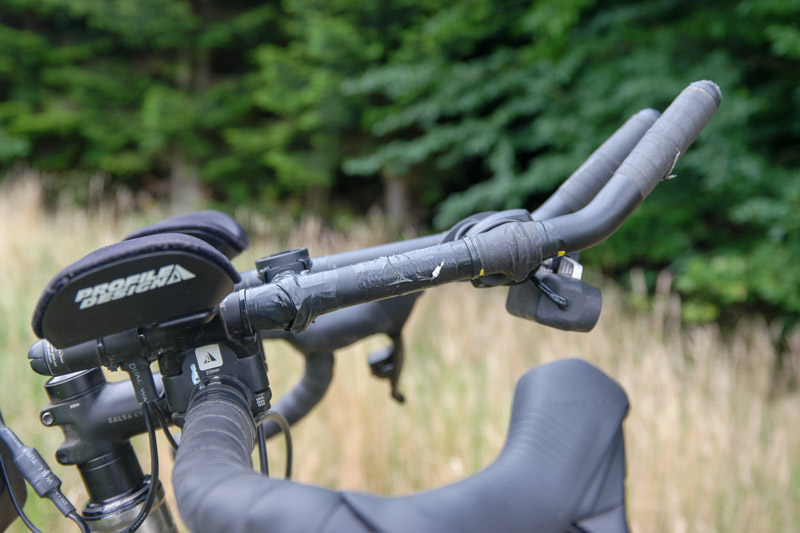
The total weight of the bike I have not weighed now. But I assume about 10-11kg.
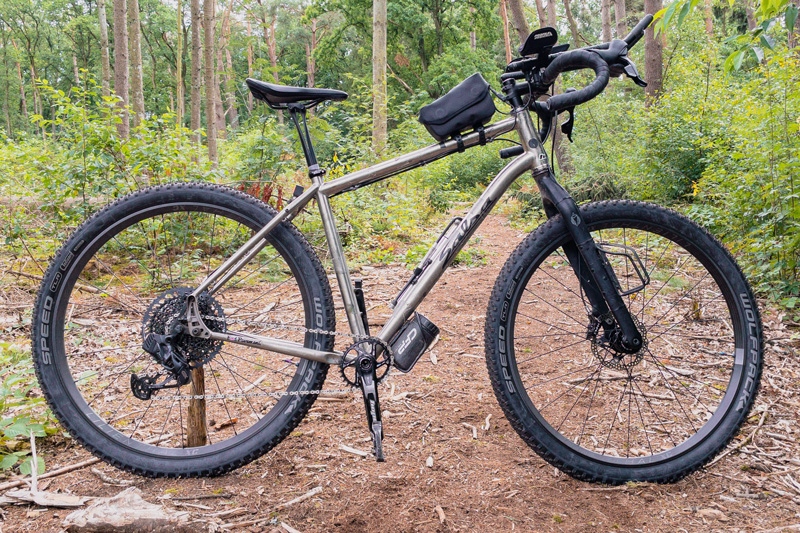

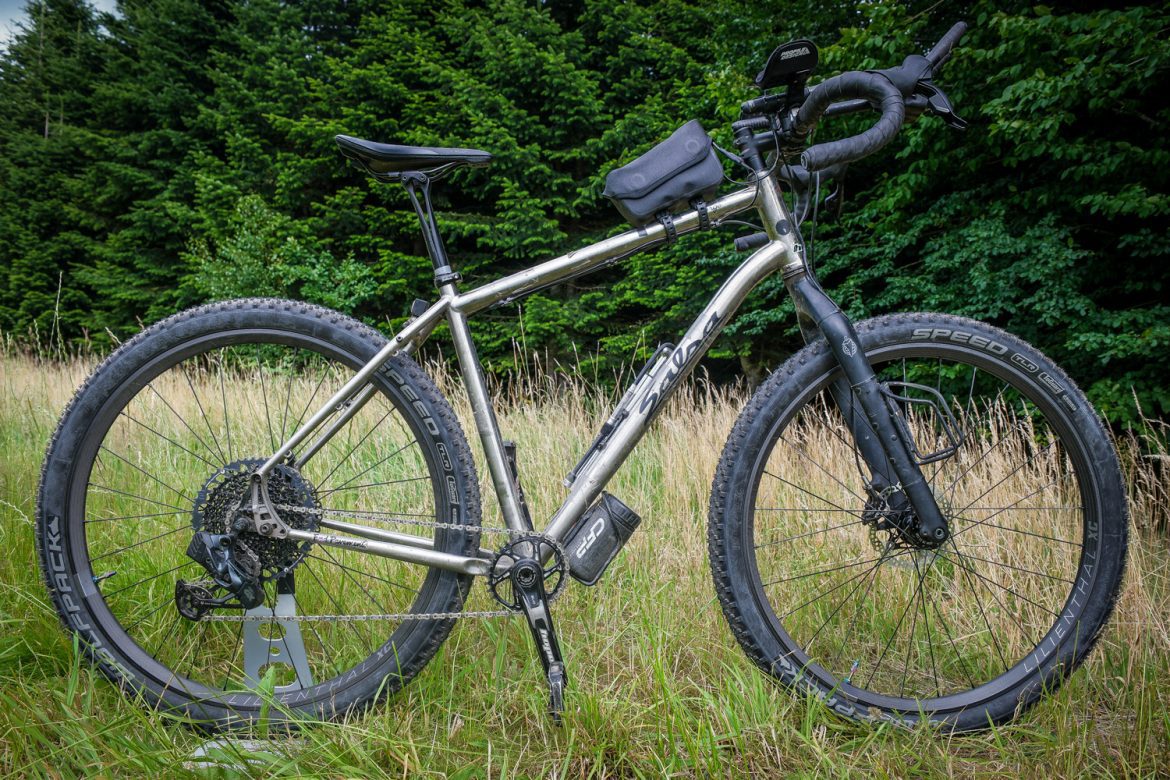
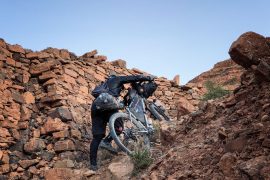
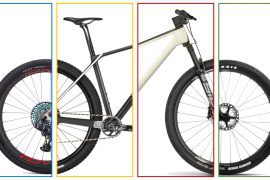
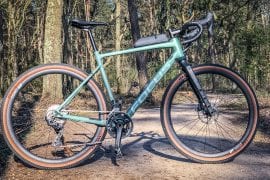
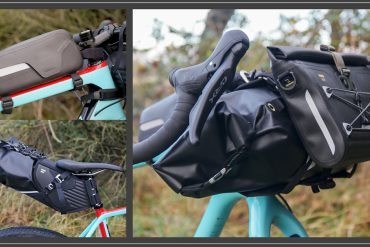
What brackets do you use to mount the top tube bag?
Wolftooth B-Rad System!
Hi Martin,
Sorry if I missed it, but just wondering which adapters you used for the Rx4 brake calipers and if you encountered any issues?
Thanks!
No problems. Only at the rear of the Fargo you have to install a 180mm adapter, because 160mm don’t work.
I have no name adapters. I think Shimano. Just the adapters that you use for the Fargo anyway.
Thanks for the quick reply! I went ahead and ordered the brakes. Are you running the 180 mm adapter with 160 mm rotor at the rear?
No, rear with 180 disc and 180 adapter. Front with 160 disc and no adapter.
Hello! That’s such and interesting build, great job and lovely website! I was considering buying a Fargo frame to build a bikepacking bike but I ended up purchasing a Bombtrack Hook EXT frameset instead, since I’m sure I will be comfortable with its geometry. I’ve had a Kona Unit and a Merida hardtail and my body doesn’t seem to be comfortable with modern MTBs and I’m a drop bar guy.
Anyway, I’d like to ask you your opinion about the AXS system, especially regarding its performance cold weather. I live in Helsinki, where the temperatures are way below zero from November to end of March. Of course my winter rides are only 2-4hrs long and I don’t do long bikepacking trips because the trails are full with snow and reserved to skiers or fatbikers.
Probably you’ve experienced some very cold days in Germany too or when you raced the Silk Road. Did you notice a dramatic drop of performance of the batteries or were you still be able to ride? I’m especially concerned about shifters batteries since are not as easy to change as the ones in the derailleur.
I’m interested in the Sram axs system because being wireless it would allow me to use the same bike easily with two different drivetrain setups – XPLR/700c/gravel tyres and Eagle/650b/Mtb tyres –
Thank you, I wish you a lovely day!
Marcello
Hi Marcello,
I have now used the AXS throughout the winter and could not find any malfunctions. I am also not aware of any weather-related malfunctions at all.
I am a fan of the AXS and can recommend it. But if you are not sure, you just have to continue to drive analog circuits. Since I had, however, in winter from time to time frozen cables.
Hope that helps!
Martin
Hi Martin,
thanks a lot for your comment. I’m positive SRAM AXS is a great system, I’m collecting more and more opinions and your bikecker’s point of you is precious.
All the best,
Marcello
Hello!
My new Salsa Fargo Ti frame is being shipped as I type this. Did the frame need to have the BB shell or head tube faced prior to building? Any tips on building it up?
Thanks!
Zap
Hi Zap,
So at the bottom bracket I did not have to regrind or cut anything. That was already perfect.
With the headset likewise not. That was already pressed in, even on the fork steerer tube. So I only needed to put it together.
Martin
Great article. I am planning on racing the atlas mountain race and am also looking at a fargo titanium. I wondered what your opinion is on whether front sus would also be beneficial?
I know its each to their own and all that but everything I’ve read or listened to says take an MTB. I might be able to stomach a hardtail that could be converted into a drop bar after the race but I’d rather a drop bar from the outset and I like the look of the fargo.
Any thoughts would be appreciated.
Hi Benjamin,
I rode the first AMR with the Fargo without any suspension. Today, I may would opt for a front sus, fork or stem.
The Fargo is the right choice as the AMR is an MTB race.
Hope that helps.
Martin